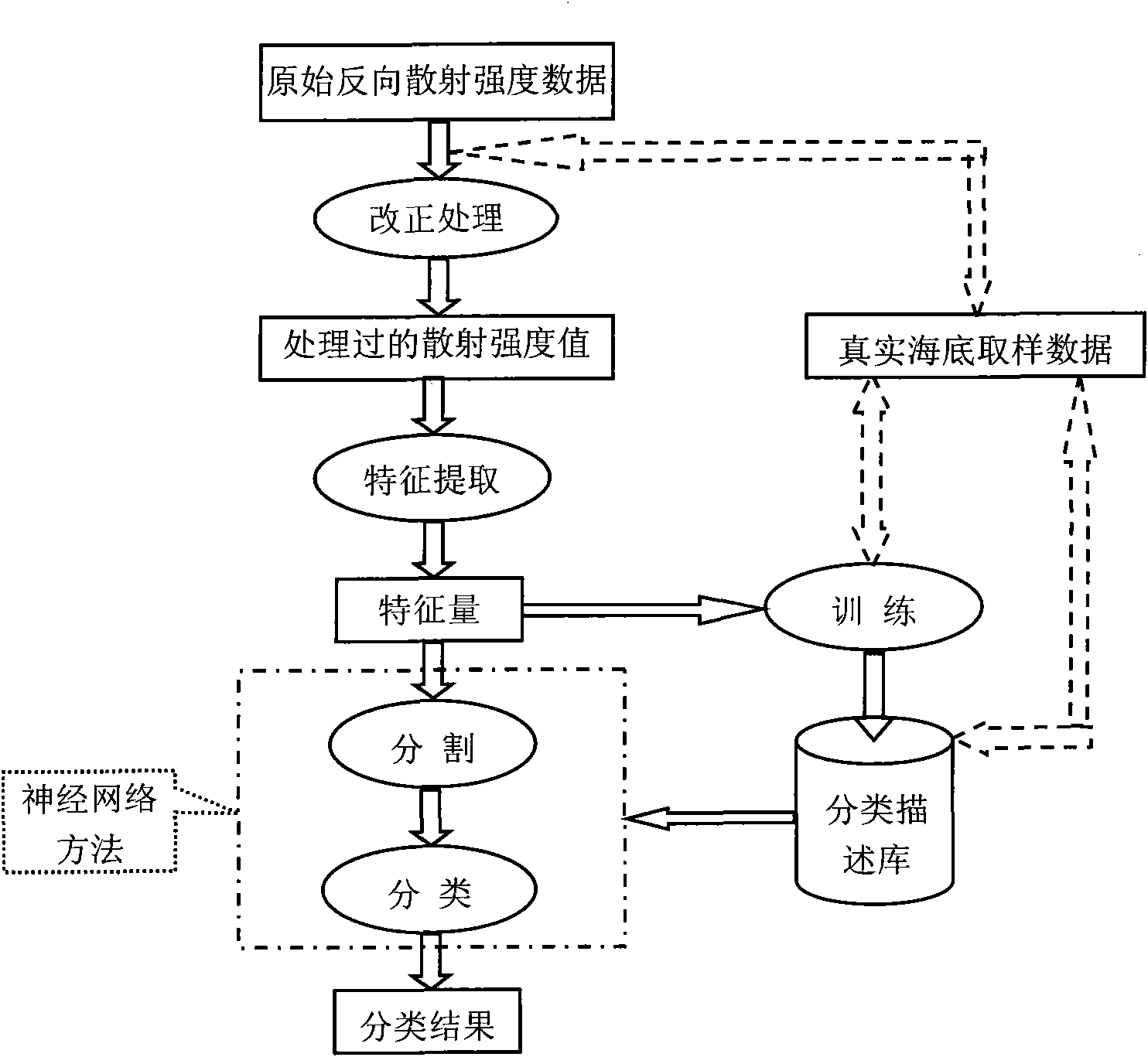Method for classifying types of mixed seabed sediment based on multi-beam sonar technology
A multi-beam, substrate technology, applied in material analysis using sonic/ultrasonic/infrasonic waves, neural learning methods, analyzing materials, etc. Effect
- Summary
- Abstract
- Description
- Claims
- Application Information
AI Technical Summary
Problems solved by technology
Method used
Image
Examples
Embodiment Construction
[0008] 1. Improved multi-beam backscatter intensity data correction model
[0009] The original multi-beam backscattering intensity cannot directly reflect the real seabed substrate characteristics and must be corrected. Focus on the analysis of the impact of the two factors of terrain fluctuation and reflection signal on the backscattering intensity, improve the current multi-beam backscattering intensity data correction model, and obtain the backscattering intensity value that can truly reflect the characteristics of the seabed bottom. In view of the previous studies on data correction and processing, the following two improvements are mainly made:
[0010] a. Vertical track and three-dimensional terrain relief correction along the track: The actual seabed topography correction is not only affected by the inclination in the direction of the vertical track, but also the inclination in the direction of the track, and the calculation model is relatively complicated. In order t...
PUM
 Login to View More
Login to View More Abstract
Description
Claims
Application Information
 Login to View More
Login to View More - Generate Ideas
- Intellectual Property
- Life Sciences
- Materials
- Tech Scout
- Unparalleled Data Quality
- Higher Quality Content
- 60% Fewer Hallucinations
Browse by: Latest US Patents, China's latest patents, Technical Efficacy Thesaurus, Application Domain, Technology Topic, Popular Technical Reports.
© 2025 PatSnap. All rights reserved.Legal|Privacy policy|Modern Slavery Act Transparency Statement|Sitemap|About US| Contact US: help@patsnap.com


